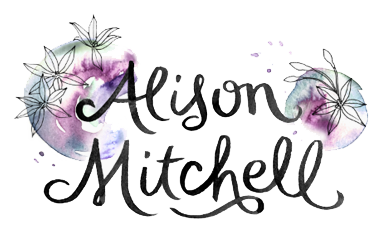Thrush
Thrush – it’s something that most women have experienced at least once in their lives. Vaginal thrush is a fungal infection caused by an overgrowth of Candida, a type of yeast. Candida albicans is the most common species of the Candida family, and when it becomes overgrown this can be referred to as a Candida infection, a yeast infection, thrush, or Candidiasis.
Normally, Candida lives harmlessly within our digestive system, however if our immune system or gut flora is disrupted an overgrowth of the yeast can occur. For most people who experience an overgrowth it is only a temporary, albeit unpleasant occurrence. Genital thrush is more common in women than men, and oral thrush can occur in the sick, the very young and the very old. Systemic candida can occur in those with a very weak immune system.
Symptoms
The symptoms of a vaginal thrush infection can include:
- Inflammation (swelling and redness) of the affected skin
- A creamy or cottage cheese like discharge that may be white or slightly yellow, and can have no smell or a slightly yeasty smell.
- Itching and/or pain
Types of Candida
Candida albicans is the most common species that causes thrush, however there are some less common forms of Candida which are becoming more prevalent, most likely due to resistance to the commonly used forms of antifungal treatment. These types include Candida glabrata and Candida rugosa.
Why does it happen?
While it’s fairly common to get thrush after a course of antibiotics, if thrush sticks around for a long time or is recurrent, then there may be some other causes.
This article is not exhaustive, so if you’re dealing with a difficult to shift thrush issue then consult a practitioner who can help you get to the bottom of the problem.
Have you ever wondered why you get thrush more if you’re on the oral contraceptive pill? Or why pregnant women commonly experience thrush? Oestrogen levels have a lot to do with it – when oestrogen is consistently high and doesn’t fluctuate as it normally would in a monthly cycle it sets up an environment that Candida can grow in easily.
Pregnancy and being on the Pill aren’t the only instances where oestrogen levels are high – some women with hormonal imbalances, thyroid disorders, poor detoxification of oestrogen and exposure to xeno-oestrogens (chemicals which interact with oestrogen receptors) will also be more susceptible to thrush.
If the vaginal environment is disrupted, such as change in the normal vaginal pH (3.5-4.5) or the normal flora (mostly lactobacilli) this also sets up an environment where Candida can grow. Some things you may not know that affect this environment are spermicides, semen, douching, regular use of diaphragms, as well as getting your period (blood has a pH of 7.35-7.45).
If your immune system isn’t up to scratch this can also allow Candida to grow more readily. This can happen during periods of stress, as a result of poor diet and/or nutritional deficiencies such as vitamin c and zinc, use of steroid or immunosuppressant medications, after chronic infections (including glandular fever but most notably HIV), as well as during pregnancy (the immune system changes during pregnancy to allow a foreign body to exist within you – isn’t the body amazing?). People with diabetes are also more susceptible to yeast infections.
Does your diet affect thrush?
The “Anti-Candida” diet is well known method to keep thrush at bay. It involves strictly avoiding all sugar, refined carbohydrates and in some instances the recommendation is also to avoid yeast containing foods (such as breads and beer), and fermented foods.
When patients who have been following this diet seek my help, I observe that the diet often causes a lot of stress as any lapses in the condition can cause the person to blame themselves, attributing it to a ‘slip up’ in their diet.
I recommend keeping sugar and refined carbohydrates to a minimum for the majority of people, and you have most likely heard me prattle on about the importance of a whole food diet in the past as well, so it should come as no surprise that I would suggest to someone who is experiencing thrush to avoid sugar and refined carbohydrates (as much as possible), but in no instance would I recommend doing it to such a degree that it causes stress.
While I think the dietary component is important in dealing with thrush, it’s not the only factor. It is common for fluctuations of chronic Candida infections to occur (as it can be with most health conditions) so blaming yourself for poor adherence to a diet isn’t good for your happiness.
There have recently been challenges to the view that ingestion of yeast containing foods increases the incidence and severity of Candida. Theoretically, it may be that foods which contain yeast are often sources of simple and refined carbohydrates, which if over consumed can negatively affect the immune system and the balance of good and bad bacteria in the digestive system, which act to keep our normal levels of Candida in check.
Crowd Control
Most people are aware of the importance of ‘replacing’ the good bugs after a course of antibiotics to prevent thrush, but what you may not know is that just using a general probiotic may always not do the trick.
After taking a course of antibiotics, a lot of the friendly bacteria that exist in your digestive system are also killed and this can make room for opportunistic organisms such as Candida to grow. In other instances, bacteria such as Clostridium difficile can grow, the culprit for antibiotic associated diarrhea.
Taking probiotics during a course of antibiotics can help to keep the unfriendly bacteria from taking up too much space, but if Candida is a regular occurrence and needs to be treated directly there are some specific strains of probiotics which can be used.
The probiotic strains that have the best research behind their use in supporting vaginal health and reducing Candida are Lactobacillus rhamnosus GR-1 and Lactobacillus reuteri RC-14. Probiotic capsules containing these species can be taken orally as well as occasionally inserted vaginally for best effect. For an over the counter option, I like Blackmores Women’s Flora Balance.
The therapeutic yeast Saccharomyces boulardii, commonly referred to as SB, can also be beneficial in the treatment of thrush.
Yoghurt, in particular Vaalia (because it contains the strain Lactobacillus rhamnosus LGG) when consumed regularly can help reduce the frequency of Candida infections.
Prebiotics are an important tool in keeping your gut flora happy – prebiotics are food for the good bacteria. I’ve written more detail about prebiotics here. Eating a diet rich in prebiotic foods will help with the crowd control, but if needed there are some prebiotic supplements which can be beneficial, such as lactulose. Taken in small doses this syrup can help to feed your good bacteria. Large doses can produce a laxative effect, so start small.
Are you sure it’s Candida?
I have had several patients seek my help for treatment of Candida, only to find that the reason they’re having such a hard time with it is because it’s not actually a Candida albicans infection. It’s definitely worthwhile getting a test from your doctor to confirm what is actually happening – it could be a more stubborn form of Candida such as Candida glabrata, or it could be a different condition which is causing similar symptoms such as lichen sclerosis, bacterial vaginosis, vulvodynia or genital herpes.
Other treatments
If after tweaking your diet and using probiotics, chronic thrush is still a problem, then it may be worthwhile looking at some of the other treatment options available.
Boric acid has been shown to be a highly effective treatment for Candida, including the more stubborn form, Candida glabrata. It is something that can be prescribed by your doctor in the form of a vaginal suppository. Depending on how stubborn the Candida is, it may need to be used anywhere from 3 days to 4 months. The use of boric acid can disrupt the vaginal flora, so probiotic and prebiotic use alongside is a good idea.
Some more natural forms of topical treatment include the use of garlic or tea tree oil which have anti-microbial properties, however while they can be effective at killing Candida they are potentially irritating to the delicate vaginal and vulval tissues.
Herbs which producing soothing, healing effects such as Calendula can be used as a topical wash to help irritated and inflamed tissues. Herbs can be taken internally to support the immune system, and there are some herbs which can also be helpful in killing Candida.
Coconut oil can have a soothing effect topically and also has some anti-candida activity.
The New Zealand herb Horopito can also be helpful in killing Candida, both when taken internally and topically. Kolorex has a range of products containing Horopito but I especially like the Intimate Care cream as a way to reduce discomfort and irritation.
Prevention
These are a few tips to help keep thrush at bay.
- Wee after sex
- Wipe front to back
- Use condoms
- Don’t douche
- Don’t use soap down there
- Wear non synthetic underwear such as cotton or bamboo
- Keep blood sugar levels balanced with a low GI, wholefood diet
- Eat a probiotic rich diet
- Seek alternatives to antibiotics first, and limit use of antibiotics if possible (see a practitioner for help with this)













Pingback: Endometriosis- Natural Management Options • Alison Mitchell Naturopath | Alison Mitchell Naturopath
Pingback: Endometriosis and the Microbiome • Alison Mitchell Naturopath | Alison Mitchell Naturopath